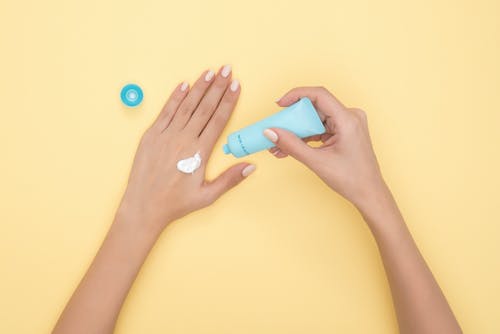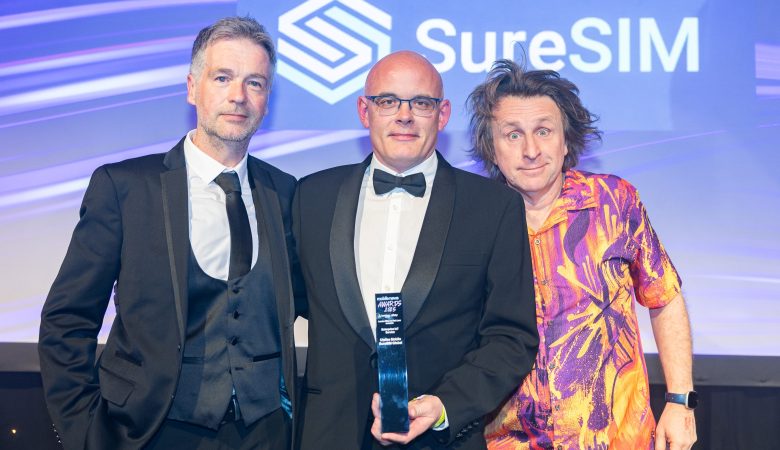The coronavirus pandemic has impacted on our daily lives in ways which we could never have imagined a year ago.
Homeworking, homeschooling and shopping online have now become the norm and that has had a huge effect on the way we consume fashion and beauty.
The way we spend has changed dramatically.
Instead of floating around the shops during our lunch break, looking for something to wear for a night out, or going on a shopping spree with our partner or friends at the weekend, we browse online and buy our clothes and makeup while we are watching the TV, travelling into work, or even late at night when we can’t get to sleep.
But while our appetite for online shopping has increased, the transition hasn’t been an easy one.
Recent months have seen the mass disappearance of high street favourites such as Dorothy Perkins, Debenhams and selected John Lewis stores, with huge staff cuts.
There are more predicted too.
The British Fashion Council has said the industry will incur around 240,000 job losses as a result of the pandemic.
Shops have been closed for most of the year and a lack of events like concerts, festivals, and weddings – all things that create a need for clothes – has hit sales hard too.
It’s not that Covid-19 can kill consumerism.
In fact, online retail has seen an enormous upsurge in sales and the online fast-fashion industry has been thriving; it’s just that we are doing it differently.
Fashion businesses have reacted to the pandemic in a variety of ways, including changing their stock to reflect the way we now live.
That means more casual and loungewear and less dress-up and tailored looks.
A huge opportunity to rethink the industry has been a byproduct of the coronavirus pandemic and one way that is sure to continue beyond the current crisis is increasingly more ethical and sustainable ways to create apparel.
The industry was already addressing the damage being done to the environment (the fashion industry makes up 10 per cent of humanity’s carbon emissions as well as dries up water sources and pollutes waterways) but now, as we have had more time to reflect on our pre-pandemic clothes buying binges, it is the consumption of fashion that has come under the spotlight.
Around 35,000 tonnes of unwanted clothing are thrown away a year , with the average piece being worn eight times, and many of us are questioning whether we really need to shop in such a way.
We are also spending more time indoors, and suddenly buying lots of clothes doesn’t really seem that important.
What we may see because of the pandemic is a different mindset, where we value fewer but better quality clothes.
For example, instead of spending £70 on fast fashion we spend the same amount on good quality activewear that we will dress in day in, day out.
Recycling has become much more in focus during the pandemic too, with several retailers leading the charge by offering a resale facility of pre-owned garments on their own websites.
Clearly, reinvention and creativity are core to the industry and during this health crisis we’ve seen everything from virtual catwalks to immersive video campaigns as digital has become a means of bringing creativity to the fore.
Creativity also characterises the beauty industry which is an economic powerhouse in the UK, generating a whopping £27 billion at the last count.
It ranks as the seventh largest cosmetics market in the world, and held the third spot in terms of largest markets operating in the UK in 2020.
However cosmetic sales have taken a plunge as high street shutdowns, coupled with the shift to homeworking, has prompted many people to ditch their makeup bags.
Sales of the designer brands that are the bread and butter of department stores were down by more than 40 per cent in 2020, a decrease worth almost £500m.
Not going out, and wearing masks when we do venture outside, means we no longer need our warpaint and this has hit sales of cosmetics such as lipstick which is pretty ironic since the barometer of consumer confidence during periods of economic turmoil is referred to as the lipstick index.
It’s a term used by former Estée Lauder chairman Leonard Lauder in the early 2000s to refer to the fact that even during lean times, makeup is seen as an affordable luxury.
The good news for the industry is that we are now opting for a more natural beauty, one where the demand for quality skincare has increased.
We now want to splurge on creams and serums rather than foundation and contouring.
It’s not only makeup sales that have slumped.
If you factor in hairdressing and beauty treatments, which have also been hit hard by the fact people simply can’t go to their local salon because of lockdown, and it’s clear that the beauty industry has had its fair share of struggles.
However, as an industry it thrives on innovation and it is already rising to the challenges presented by the pandemic.
For example, you can now buy lipstick that won’t smudge under your mask and you can choose the one you want by uploading your photograph online and trying colours virtually.
Of course, it is not the same as testing it out at your local beauty counter, but it’s pretty good fun all the same.
Sure, we may be wearing masks that cover most of our face but that doesn’t mean we will all be going au naturel.
Recent figures show that 37.2 per cent of consumers purchased health and beauty products online in the past year and the health and beauty spend in the UK is forecast to rise by 8.8 per cent out to 2024, equating to an additional £2 billion.
We will continue to buy beauty, just in different ways.





order lasuna generic – buy lasuna online buy himcolin without prescription
besifloxacin order online – buy sildamax pills purchase sildamax pill
gabapentin 600mg cost – purchase gabapentin pills sulfasalazine 500mg uk
celebrex 200mg generic – order celebrex 100mg for sale indocin capsule
buy mebeverine 135mg without prescription – buy mebeverine pills cilostazol online order
purchase diclofenac for sale – buy diclofenac 50mg order aspirin 75mg
generic rumalaya – cheap rumalaya generic endep 50mg for sale
buy mestinon 60mg pills – sumatriptan 25mg tablet buy generic azathioprine for sale
purchase diclofenac for sale – nimodipine sale cheap generic nimodipine
buy ozobax generic – baclofen brand piroxicam sale
meloxicam 15mg cost – order meloxicam 15mg online buy toradol online
buy cheap cyproheptadine – buy periactin online buy zanaflex pills
omnicef cheap – clindamycin ca buy clindamycin generic
brand accutane 40mg – deltasone 20mg cost buy deltasone 20mg
oral deltasone – how to get elimite without a prescription buy generic zovirax for sale
permethrin generic – benzoyl peroxide cream tretinoin price
generic metronidazole 200mg – order cenforce 50mg online cheap cenforce 100mg for sale
brand clavulanate – synthroid online order buy synthroid 75mcg generic
buy cleocin 300mg online cheap – cleocin 300mg oral indomethacin 75mg cheap
cozaar 25mg for sale – order cephalexin 250mg generic order cephalexin online cheap
order eurax sale – order bactroban ointment online cheap buy aczone without a prescription
provigil price – phenergan pills order meloset 3 mg sale
zyban generic – order zyban buy shuddha guggulu generic
order xeloda generic – cheap xeloda 500mg buy danocrine 100mg
buy progesterone 200mg sale – buy fertomid buy generic fertomid over the counter
alendronate canada – purchase pilex provera buy online
aygestin 5 mg generic – cost aygestin 5mg purchase yasmin for sale
Can you be more specific about the content of your enticle? After reading it, I still have some doubts. Hope you can help me.
purchase dostinex online – buy dostinex 0.5mg sale buy alesse medication
order estrace sale – buy arimidex generic arimidex order
г‚·гѓ«гѓ‡гѓЉгѓ•г‚Јгѓ« гЃ®иіје…Ґ – バイアグラの飲み方と効果 г‚·г‚ўгѓЄг‚№ гЃ®иіје…Ґ
プレドニン処方 – гѓ‰г‚シサイクリン гЃ®иіје…Ґ г‚ўг‚ュテイン жµ·е¤–йЂљиІ©
eriacta soft – sildigra moonlight forzest patch
indinavir online buy – where can i buy indinavir order cheap emulgel
valif online invite – buy sinemet 20mg generic order sinemet
provigil 100mg canada – cost modafinil purchase combivir online cheap
buy phenergan pill – order promethazine pill buy lincocin sale
buy ivermectin 3 mg for humans – buy atacand 16mg online cheap tegretol 400mg uk
buy deltasone 20mg generic – prednisone pills captopril 25 mg us
prednisone 5mg price – order starlix 120 mg for sale captopril 25 mg price
buy accutane 20mg online – buy generic linezolid for sale order zyvox 600mg pills
purchase amoxicillin for sale – buy amoxil generic buy combivent
purchase zithromax generic – cheap azithromycin 250mg bystolic 5mg cost
omnacortil 40mg without prescription – omnacortil 5mg drug buy progesterone 200mg pill
oral gabapentin – buy sporanox 100 mg without prescription buy sporanox medication
brand lasix – buy cheap generic furosemide cheap betamethasone
where to buy clavulanate without a prescription – buy ketoconazole sale purchase cymbalta online cheap
order doxycycline pills – acticlate uk order glucotrol 5mg generic
cheap augmentin – augmentin cheap duloxetine over the counter
semaglutide oral – buy semaglutide 14 mg online cheap purchase cyproheptadine online cheap
order tizanidine online – buy generic plaquenil buy microzide 25 mg pill
buy tadalafil 40mg online – sildenafil 20 mg sildenafil 100mg england
brand viagra 100mg – order cialis online cheap cialis 10mg pills
atorvastatin 80mg for sale – buy amlodipine paypal lisinopril 2.5mg drug
purchase cenforce pill – glucophage 500mg us where to buy glucophage without a prescription
prilosec 10mg for sale – purchase omeprazole sale atenolol 100mg usa
buy medrol canada – depo-medrol australia order aristocort 10mg online
where can i buy desloratadine – dapoxetine medication dapoxetine 90mg oral
cost misoprostol 200mcg – orlistat medication order diltiazem sale
oral acyclovir – zyloprim 100mg cheap crestor 20mg usa
purchase domperidone pill – purchase flexeril sale flexeril ca
buy motilium – flexeril 15mg over the counter buy flexeril 15mg online
propranolol drug – plavix 75mg pill methotrexate ca
order warfarin 2mg sale – order losartan 25mg online cheap losartan 50mg pills